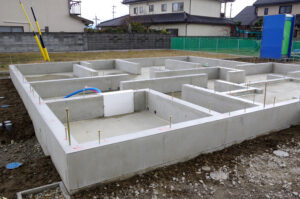There are seven major fault lines running through the San Francisco Bay Area, making it one of the most earthquake-prone locations in the world. The United States Geological Survey of 2014 stated that in the area, there was a “72% probability for one or more magnitude 6.7 or greater earthquakes from 2014 to 2043.” However, San Francisco hasn’t seen an earthquake above 6.5 since 1989, so buildings are not as well-equipped to deal with earthquakes as they once were. While we can’t do much to prevent an earthquake, but we can do our best to prepare ourselves for when they do come.
Earthquakes Damage Buildings
Most of the damage caused by earthquakes occurs to buildings. Michigan Technology University reports that the two greatest dangers of earthquakes are the ground’s vibration and displacement. These dangers are the most hazardous because of the damage they do to buildings. This damage is hazardous and is expensive to repair. The Federal Emergency Management Agency (FEMA) reports that the US suffers approximately $4.4 billion in annual losses from earthquakes, primarily in building damages. And only 10% of homeowners have their home insured against earthquakes, thus making these losses even more costly. Besides buying earthquake insurance, what can we do to our homes to protect them from earthquakes?
How to Prepare Your Home
Preparing your home for an earthquake is called “seismic retrofitting.” Its simplest steps include repairing your foundation or replacing any damaged support beams. After these basic repairs, there are three main steps included in seismic retrofitting. Each of these steps hinders the earthquake from having a dangerous effect on your home’s foundation.

- Foundation bolting strengthens the connections between your home’s concrete foundation and the first wooden members of your floor (the “sill” or “mudsill”). If your home already has bolts between the floor and foundation, you should inspect them and consider replacing them. If your home doesn’t have any bolts connecting your home to the concrete, you should add some. These bolts prevent your home from slipping off the foundation in the case of an earthquake.
- Cripple wall bracing gives the floor of your home some extra support. A cripple wall is a (typically wooden) support wall built between the concrete foundation and the first floor. Not every home has a cripple wall–but it is an important part of earthquake protection. If this wall collapses, the floor can collapse on either side of it. This wall can be strengthened with structural-grade plywood, which gives the wall extra stiffness. Strengthening the cripple wall prevents what is called “racking,” where the foundation collapses to one side, tipping the house.
- House reinforcement in general includes strengthening other masonry walls, concrete walls, chimneys, or foundations. Fun fact: out of all the types of walls in buildings, masonry walls are the weakest.
Additional Tips
- It might help to replace metal piping with flexible connectors where possible; more flexible piping allows for more movement before complete collapse. This is particularly important since pipes transport either water or gas, both of which become problematic when loose in your house.
- Anchor heavier and taller items of furniture to the walls to prevent them from falling; OSHA (the Occupational Safety and Health Administration) reports that most injuries during earthquakes are caused by falling items from or within the home.
***
If this is one of your first times performing renovations on your home, consult a professional to be sure your home gets the best possible earthquake protection.
These renovations won’t stop the earthquake from coming, but they might be just enough to leave your home standing victorious when the earthquake has passed.
References
https://en.wikipedia.org/wiki/San_Andreas_Fault#/media/File:Eq-prob.jpg
https://www.earthquakesafety.com/earthquake-retrofitting.html
http://www.geo.mtu.edu/UPSeis/hazards.html
https://pubs.usgs.gov/fs/2016/3020/fs20163020.pdf
https://www.osha.gov/SLTC/emergencypreparedness/guides/earthquakes.html


